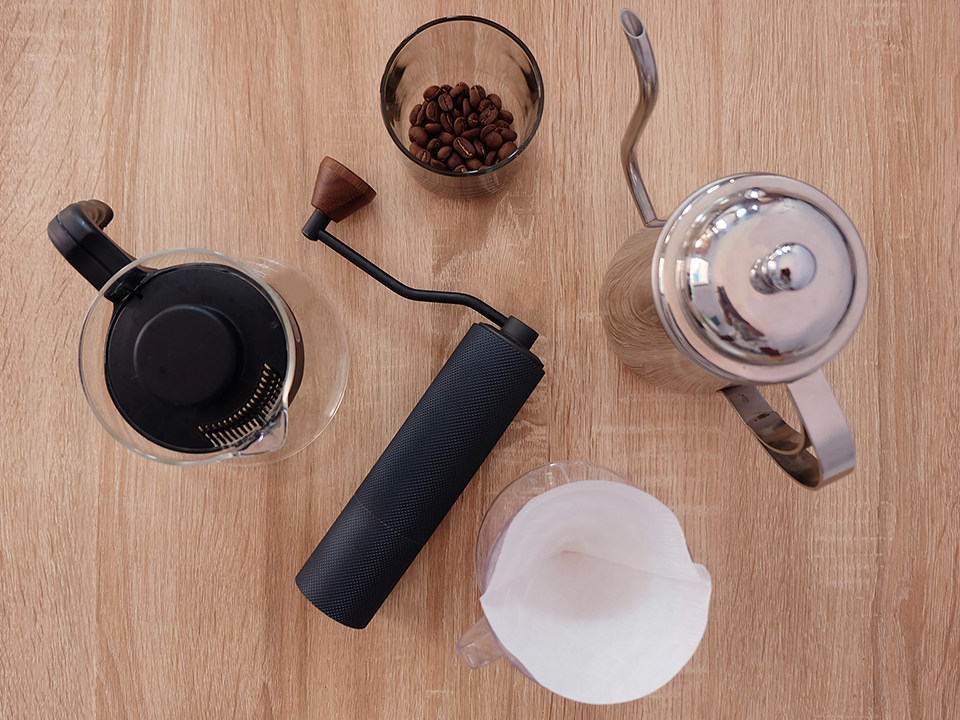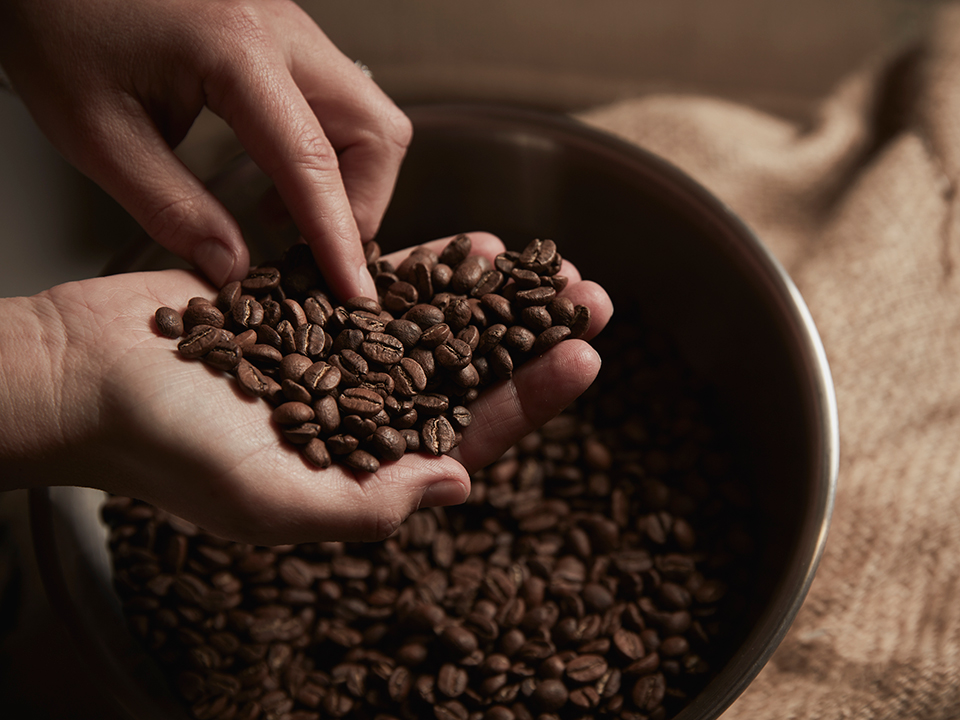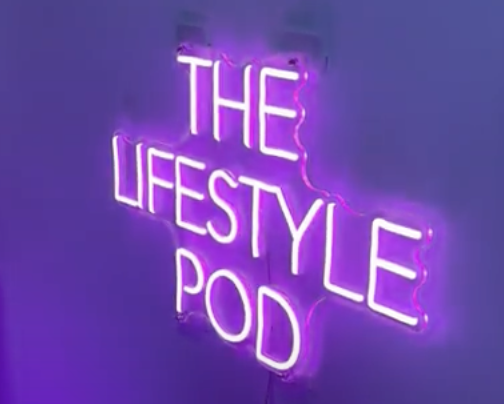How to become an amateur homebrewer
Wonderly Account Manager Jordanne Hoesli-Atkins shares home brewing snippets

Jordanne Hoesli-Atkins
So here you are, interested in becoming an amateur home brewer because let’s face it, if you weren’t coffee dependent before the pandemic there is a good chance that you are now – because, well, homeschooling, general pandemic anxiety…and it’s something to do.
In my case, as a coffee lover but still very much an amatueur, I do a lot of reading and research on different products and brands to find out what’s out there and what’s going on – all through a genuine love of coffee.
In doing so, I have invested in my home brewing a-plenty during (and before) the pandemic and thought I could share a few interesting snippets you could apply to your own home brewing. Or, if you fancied a light-hearted read while sipping a cup of joe, welcome!
The equipment – to make the coffee
All the gear, no idea. Not too far off really. I currently have a Moka pot, French press, Nespresso machine and Aeropress all at my disposal. The type of coffee you like will depend on the type of machine you may have, or want to use. My go to’s are the
Nespresso, for espressos and my recently purchased Aeropress (oh my!) which has been a pure delight to use and has really developed my home brewing “skills” & knowledge.
If you have none of this equipment, or some, then I would really advise you to think about the type of coffee you like to determine what tool you should use. Do you like a stronger coffee such as an espresso or black americano? Or something lighter like a filter/drip coffee? Perhaps you like milky coffees like a latte or cappuccino? (Oh, I forgot to add I also have a milk frother).
For those who want to spend a bit more time over their brewing I would suggest the Moka pot, a V60, or Aeropress – which is a bargain at £25! There is even a yearly Aeropress Championships… I know right!? I personally can’t praise the Aeropress highly enough; it’s small, light, portable and is a great tool to make nearly all coffee styles. I use it to make a long black or americano.

There are hundreds of recipes for this handy little device, and I would suggest choosing the one that is recommended from where you buy your coffee beans, as they will have tried and tested many factors in order to create the best recipe to bring out the flavour of the beans.
To use an Aeropress you’ll need pre-ground (filter) or whole beans to grind at home. I suggest a few brands below for this.
As for an espresso machine, you could go all-in with a barista Sage espresso machine (bean to cup) to make barista style coffee at home. And why not, if you’ve got a spare £700? However, as we’re talking about being an amateur, a Nespresso or Tassimo machine might do the trick especially if you carry on reading to see if a few tweaks will really make a difference to your cup.
Many coffee brands now offer a subscription service so you never need to worry about running out of coffee, and along with this some even supply you with your own espresso machine so you don’t even have to invest in the machine itself! I’d recommend doing some digging as to what brands might be offering this package if you didn’t want to commit to the machine (I also suggest a company below).
If you’re buying beans, you will need a coffee grinder. Getting a coffee grinder means you have the freshest beans and can adjust the grind to suit your brewing needs. A hand grinder or electric grinder, it’s up to you. You can buy top of the range with both, or pick one at a price which suits you. However, there’s quite a lot of advice that discusses the impact of a good grinder on the flavour of the coffee & outcome – as you want to grind the beans, not chop them up. Take some time to read the reviews of the product. Hario is a staple coffee brand if you are considering a hand grinder & they have a few pretty inexpensive options too..
Last but not least you can also look at the cup you use. We’ve all seen latte’s served in a taller glass and cappuccinos in wide mugs. Pick a cup that suits your coffee style. However, if you’re making an espresso, it is best served in a small espresso cup so that the crema stays on top of the coffee (instead of flattening out in a larger cup) & the aromas are locked in – the crema also indicates the freshness of the beans.
The water – to brew the coffee
Turn on the tap, fill up the kettle and off you go. Add to your chosen method and there you have it. Coffee made.
Not so fast. Over the last year I have really taken an interest in how water can massively affect the taste of your coffee and impact all the hard work you put into making your cup.
Whatever water you use, it will affect the full flavour of your coffee. I live in a hard water area and have for all my life, so water from the tap tastes fine to me. Okay, sometimes a little metallic but that’s okay right? But if you’re really keen to maximise your home brewing and coffee flavour potential, I would highly advise investing in a water filter system to help – jugs, like Brita or tap filters – there are loads of options. Most popular recognisable water filter brands will help to take the impurities out of the water (which is impacting the taste of your coffee) but it’s important to keep in mind they might not go the whole way.
There is a product I have come across called ‘Peak water’ that many of the coffee experts are raving about and recommending, which will completely change your home brewing. I don’t want to use this space to start pushing promoting products but this might really make a difference. It’s a fully adjustable water filter jug with a water testing kit, so it will work best with your water hardness or type and will really help to set you on your way to a quality home brewing experience. Also, the filters are fully recyclable – even better.I have mine ordered!
The coffee – the taste of the coffee
Capsules, whole beans, pre-ground – it’s all there for you. Literally nowadays at a click of a button. The options I list below are based on the equipment I have at home and who I’ve found & enjoyed. One of my personal highlights with coffee is trying and exploring different brands in order to try new flavours and finding out what each brand has to offer.
The type of coffee you need depends on the equipment you’re using, and style. For the freshest cup, you should buy whole beans from your chosen brand and grind them at home with an electric or hand grinder. Slightly more faff, but totally worth it.
After investing in an Aeropress I realised I needed to start grinding the beans at home to have the best cup rather than using the pre-ground I used to buy (I’ve ditched the hand grinder for an electric grinder now – yep, my investment in this home brewing is real). However, the pre-ground coffee works well in the Moka pot and would also work well for the French press. Nowadays, when you’re shopping around for coffee online it’ll tell you what grind you need for your chosen method, and the differences in taste between an espresso or filter roast. My advice is to read what’s on their website and let them guide you.
I want to quickly focus on capsules, as this is where my love of coffee really took off (rightly or wrongly). I was given a small Nespresso machine for Christmas in 2019 and have never looked back. I looked everywhere online to find independent roasters who were selling capsules, not wanting to settle for the Nespresso ones. As I said, a habit of mine is finding brands that are off the beaten track. I also didn’t even know much about compostable pods and once I found them, I haven’t bought anything else since (except for that one time I ran out and popped to the shops to grab whatever I could). Compostable capsules can go straight into your foodie bin after use and they’ll disappear in 12 weeks. Even better, buy from carbon-neutral brands or those who are keen on being green. As with many industries, the coffee industry impacts the environment and therefore it’s important to find out which brands are doing what they can to offset their carbon footprint. Three brands I’d recommend are Colonna (who also offer a package including an espresso machine), Lost Sheep Coffee and Halo coffee.
Other brands I also recommend to try from: Caravan, Origin Coffee Roasters, Ground Coffee society (pods available), Coffee Real, Volcano (pods available), Moonroast and Copper Coffee. To name just a few.

The coffee industry
Drifting slightly away from home brewing…but while I have you I couldn’t help but throw in a little snippet about the coffee industry itself. Now in it’s 5th wave it has changed and developed hugely over the last few decades.
Now with a focus on smart aspirational concepts, excellence and investment in technology, it’s a really exciting time to show interest in the diversity and wonders of the coffee world. Although there can be a lot of information out there, we’re all still learning really
If you’re interested in what the coffee industry is doing to combat gender equality, read this blog by Caravan Coffee roasters, who have committed to purchasing more from female coffee farmers.
And that’s it! If you’re still reading this to the end then I thank you. As with anything, it goes without saying that as long as you like your coffee and how it tastes, that’s all that matters
Just to recap in 4 small steps..to making great coffee at home
1. A tool to make the coffee
2. Filtered water for maximum taste
3. Your favourite coffee beans or pods
4. Experiment! And find out what you love



